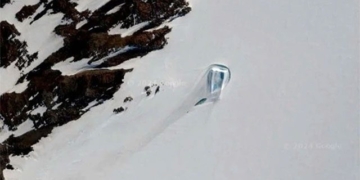Fans of the fantasy genre are likely familiar with the concept of special stones or crystals forming on ancient remains, possessing mystical properties. However, in reality, this type of crystal is entirely real and is known as Vivianite, although it holds no mystical attributes.
What is Vivianite?
Vivianite is a rare phosphate mineral that has been found to grow on organic materials such as fossilized shells, animal waste, and even on decaying corpses.
This green crystal is famous for its beautiful structure and vibrant colors, typically developing in iron-rich sediments that contain bones, rotting wood, and other organic materials, particularly in clay and sandstone.
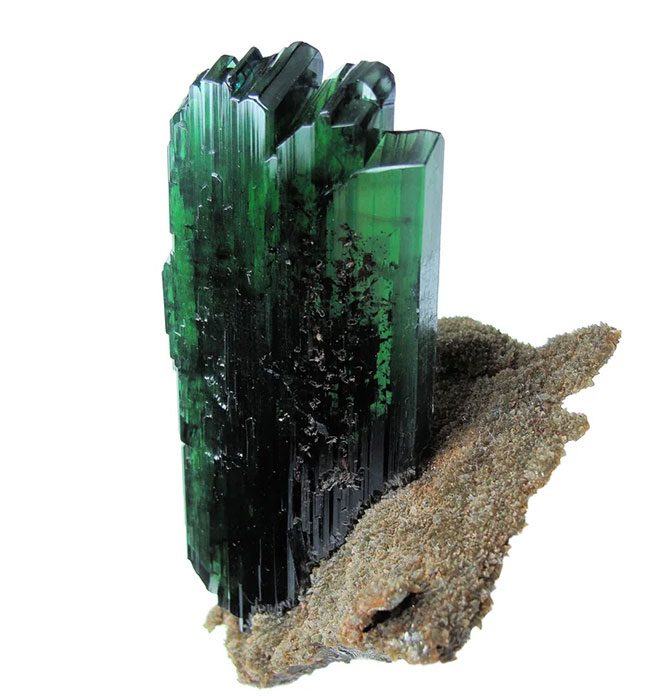
When first formed, these crystals are colorless, but upon contact with oxygen in the air, they quickly turn green. This creates a peculiar sight for anyone who later discovers these remains.
They can also be found in hydrothermal replacement deposits and in phosphate-rich granite pegmatites—igneous rocks with a coarse texture and intergrown crystals.
This crystal is extremely fragile and, when newly formed, is often light-colored or transparent, but its color changes significantly when exposed to light. This is due to oxidation, which darkens the crystal through shades of blue, to deeper greens and purples, and eventually to a dark violet-black.
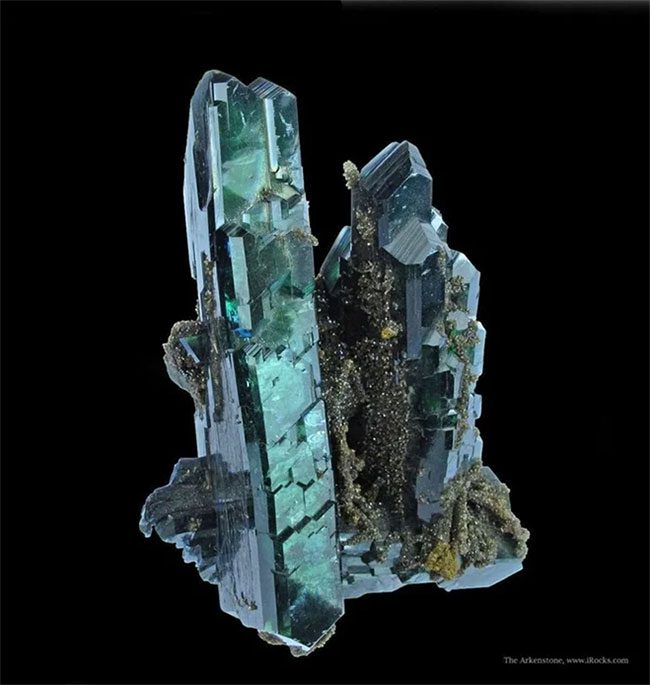
Colorless pure Vivianite, this mineral is easily oxidized, changing color and is usually found in prismatic forms ranging from dark blue to deep green. Vivianite crystals are often discovered within fossilized shells.
Why does Vivianite form on corpses?
This green crystal forms due to the interaction between iron, water, and phosphate. Our bodies contain significant amounts of phosphate, particularly in teeth and bones, which are released into the surrounding environment as our bodies begin to decompose. Under rare conditions, where the surrounding area contains water and iron, the phosphate in the body reacts and forms the mineral Vivianite.
In most cases, Vivianite has been observed on corpses that have been buried for centuries, where it forms on bones and teeth. There are also much older examples where it has been found on mammoth ivory and the bones of other ancient animals, but some cases have identified it on more recently deceased human bodies.
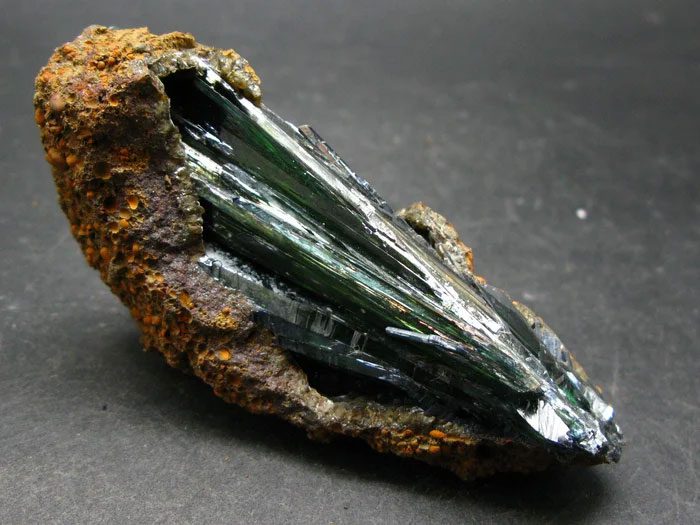
Vivianite is a mineral easily separated, with perfect cleavage perpendicular to the crystal axis and is easily soluble in acid. It has a melting point of 1,114 degrees Celsius and is non-radioactive.
In the 1960s, archaeologists discovered several corpses at Lake Walchen in Germany, which only retained partial skeletal remains and were covered in adipocere, a product of the decomposition process that transforms fats in the body into a soap-like substance.
One of the two corpses had an iron plate that had formed Vivianite between it and the adipocere. An analysis of the clothing of the body indicated that it may have been submerged in water for approximately 30 to 50 years, and these crystals could form in such a short time because the iron plate released enough ferrous ions as it corroded, allowing Vivianite to develop on the phosphate-rich parts of the body.
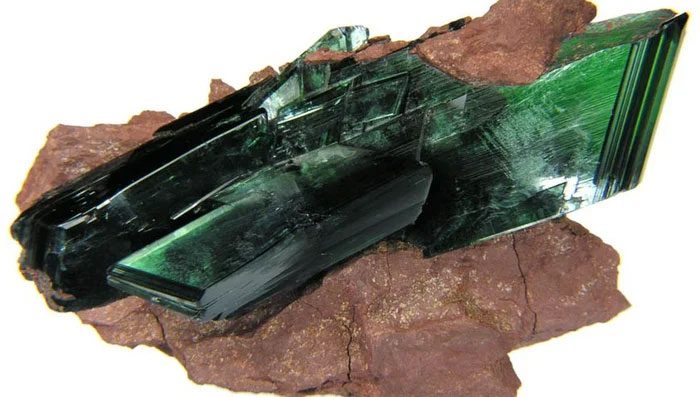
Vivianite has been observed in rock and crystal form, noted for its various colors such as blue, green, and sometimes colorless. Good quality crystal samples are often found in mines in Bolivia, Brazil, Mexico, and the United States.
Vivianite has also been found in various parts of the body (inside, under the skin, and in lung tissue) of “Ötzi,” the 5,300-year-old ice mummy discovered by a German tourist in the Tirolean Ötztal Alps in 1991. It is believed that the crystals formed on the body at points where it came into contact with iron-containing rocks.
Similarly, in 1996, another corpse was discovered in Lake Brienz, Switzerland, believed to belong to a drowning man from around the 1700s, which also exhibited this type of green crystal.
The formation of Vivianite is both good and bad news for scientists attempting to study skeletal remains. The presence of Vivianite can provide deeper insights into the composition of the burial soil and the manner in which the body was interred.
On the other hand, Vivianite can pose significant challenges for DNA analysis, as it may hinder a common research method known as polymerase chain reaction (PCR).
Vivianite was named in 1817 after John Henry Vivian, a British mineralogist who first discovered this mineral in Cornwall, England.


















































